The Key Ingredient to Organizing is Education
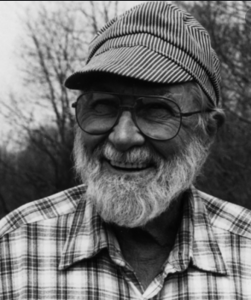
Myles Horton
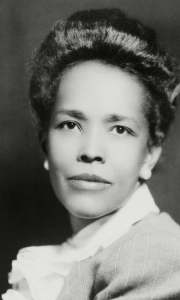
Ella Baker
While looking at the different ways in which organizers apply their education to community organizing, I have decided to focus on the importance of education and how that contributes to a person’s success when making social change. I plan to analyze both: 1) Horton and Freire’s novel We Make the Road by Walking: Conversation on Educational and Social Change and 2) Charles Payne’s article “Ella Baker and Models of Social Change.” In the book We Make the Road by Walking: Conversation on Educational and Social Change, I will concentrate on Myles Horton’s research at Highlander Folk School. I will focus on the Highlander Folk School’s distinct ways in which education must be approached to prepare people for when individuals look to organize some form of activism. As I examine how Highlander approaches education, I will also look at the way Charles Payne presents Ella Baker’s way of educating herself. Through the work of Horton and Ella Baker, it becomes clear that the organization is a vital part of social change. However, both authors agree that education and teaching oneself through experiences is an important step. By clarifying their definition of education, these authors show how a certain form of learning is crucial when organizing because it teaches self-respect, breaks through racial barriers, and enhances your knowledge.
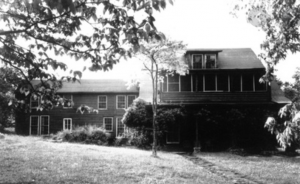
Highlander Folk School
 Before I begin talking about how Ella Baker and Horton educated themselves and others, I will define education. For Horton, education at Highlander didn’t mean teaching people information or lessons from a textbook. It meant gaining knowledge from hearing the individual experiences of others. Horton thought that hearing the stories of others would educate people “not [on]what they know, but what they didn’t [don’t] know” (Horton & Frreire, 1990, p.151). With this approach, the adults hearing the personal stories begin to learn and gain critical knowledge that can only be obtained by listening to others, ultimately preparing them to make social change. Not only does Horton believe in learning through experience, but so does Ella Baker. Ella Baker learns how to organize and make social change through her childhood experiences. Growing up, Ella Baker “[heard] stories of slave revolts” and witnessed her grandfather’s way of activism as a “reconstruction-era activist” (Payne, 1989, p.886). Hearing these stories and seeing activism at a young age influenced and gave Ella Baker the knowledge that contributed to her community organizing as she got older.
Before I begin talking about how Ella Baker and Horton educated themselves and others, I will define education. For Horton, education at Highlander didn’t mean teaching people information or lessons from a textbook. It meant gaining knowledge from hearing the individual experiences of others. Horton thought that hearing the stories of others would educate people “not [on]what they know, but what they didn’t [don’t] know” (Horton & Frreire, 1990, p.151). With this approach, the adults hearing the personal stories begin to learn and gain critical knowledge that can only be obtained by listening to others, ultimately preparing them to make social change. Not only does Horton believe in learning through experience, but so does Ella Baker. Ella Baker learns how to organize and make social change through her childhood experiences. Growing up, Ella Baker “[heard] stories of slave revolts” and witnessed her grandfather’s way of activism as a “reconstruction-era activist” (Payne, 1989, p.886). Hearing these stories and seeing activism at a young age influenced and gave Ella Baker the knowledge that contributed to her community organizing as she got older.

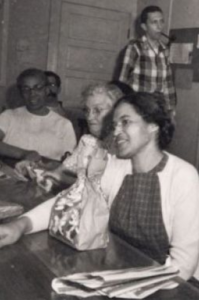
Rosa Parks at Highlander Folk School
A critical aspect of education that an organizer should have is self-respect. At Highlander, Horton helped the adults receive self-respect by giving them the opportunity to figure out information on their own. Self-respect would be obtained by asking questions, sharing comments, and forming connections. An example of this occurring is when “Rosa Parks talks about her experience at Highlander, and she doesn’t say anything factually that she learned” (Horton & Freire, 1990, p.153). Instead, she tells her story. The fact that Rosa Parks solely talks about her experiences and doesn’t mention any “subject that was discussed,” shows the impact of experiential education and how it consumed Highlander’s curriculum (Horton & Freire, 1990, p.153). After telling her experiences, Rosa Parks developed confidence and was “emboldened… to act” when leaving Highlander (Horton & Freire, 1990, p.153). Not only was she empowered, but she also “found respect [in herself] as a black person” (Horton & Freire, 1990, p.153). She found respect for herself by telling her story. When doing so others received a greater understanding and learned from what others had to say. Here we can see how self-respect is an important part of education that equips people such as Rosa Parks to be an activist and spark social change. Although self-respect is a significant quality of education for an organizer, so is having the ability to tear down racial barriers.
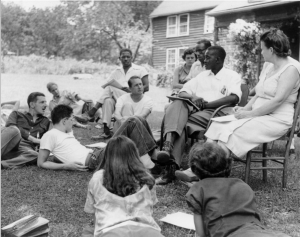
In this image you can see the adults at Highlander, black and white, coming together to learn and educate one another.
Breaking down racial barriers is something that Horton did immediately when he made Highlander an integrated school during the civil rights era. Because Highlander offered a space that promoted social equality, racial boundaries were crossed, and trust was formed. Horton mentions that Rosa Parks “[found] white people she could trust,” Rosa Parks discovering trust in the white race was a momentous moment for her at Highlander (Horton & Freire, 1990, p. 153). Once Rosa Parks eliminated the internal racial barriers, she was able to access critical knowledge that wouldn’t have been attainable before. Knocking down the racial walls was an essential moment in Rosa Parks’s life as an organizer because it helped her see society differently, ultimately making her a successful activist during the civil rights era. Breaking through racial barriers is vital to community organizing because it gives people more perspectives to efficiently organize acts of collective civil disobedience such as boycotts, sit-ins, and strikes. As you can tell, breaking through racial norms is a significant attribute of education that organizers should have. This essential skill of activism is reliant upon access to education. In order to consistently spark social change, activists must have access and ability to expand their knowledge for the sake of the cause.
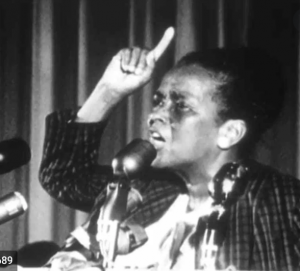
Ella Baker community organizing
Ella Baker expands her knowledge of activism through her childhood and college experiences, eventually helping her become a great organizer. Ella Baker gained critical knowledge as a child from her grandmother, grandfather, and mother. The stories she heard and the activism that surrounded her, allowed Baker to learn and gain knowledge about her community and herself as a black person in society. Through early experiences Ella Baker was able to see her role as an organizer, “ she self-consciously saw herself as a bridge across the sharpening social class divisions in the Black community” (Payne, 1998, p.886). She even states, “I became active in things largely because my mother was active” (Payne, 1998, p.886). Having this unique childhood helped Ella Baker, at a young age, “have a sense of their[her] own value and their[her] strengths,” allowing her to understand herself as an activist (Payne, 1998, p.886). At the same time, her childhood experience gave her strength, knowledge, and determination to make effective social change. The impact of her childhood experiences can be seen through her college years at Shaw University. At Shaw, Ella Baker applied what she learned as a kid and used it in “protesting the school’s restrictive dress code for students,” making small changes (Payne, 1998, p.887). Ella Baker’s unusual childhood broadened her knowledge and gave her a clear understanding of her community, her power, and her role as an activist within it.

Ella Baker
